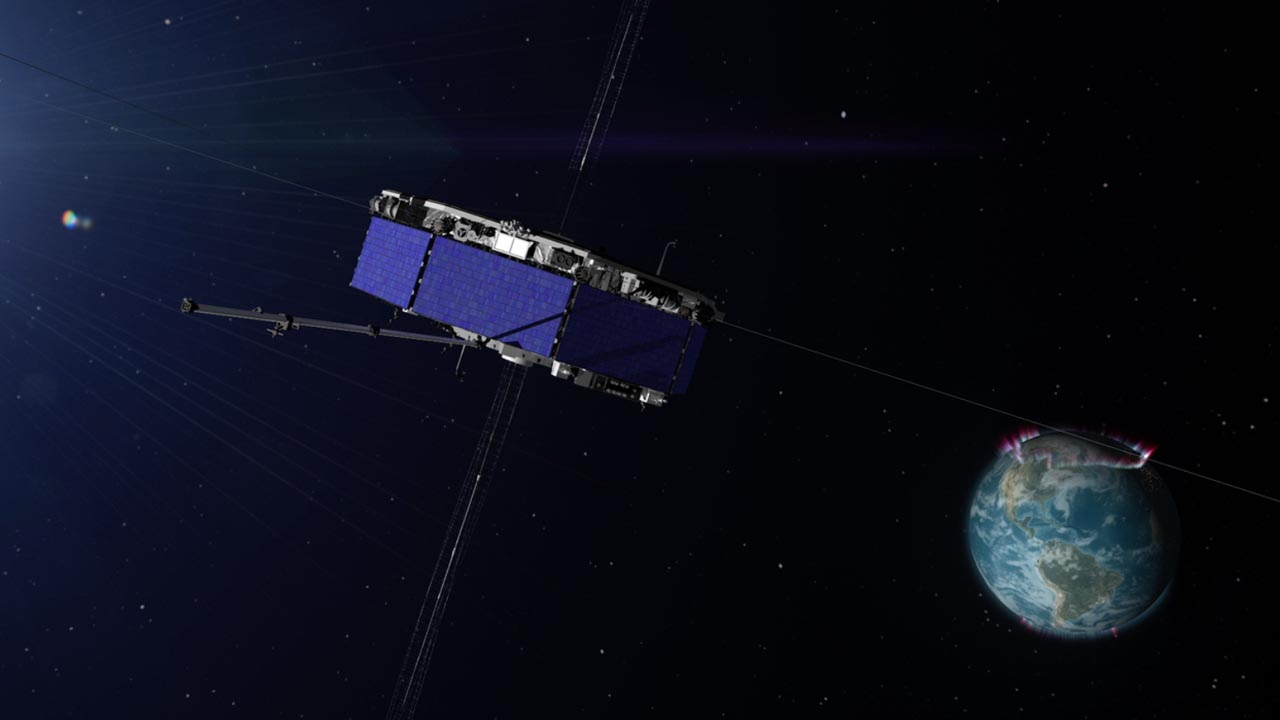
The red ellipses show the MMS orbit paths during the first and second phases of the mission. Each spacecraft uses GPS signals – which come from satellites situated along the green circle shown surrounding Earth — from the far side of Earth to track its position. Credits: NASA/MMS
NASA’s Magnetospheric Multiscale mission, or MMS, is breaking records. MMS now holds the Guinness World Record for highest altitude fix of a GPS signal. Operating in a highly elliptical orbit around Earth, the MMS satellites set the record at 43,500 miles above the surface. The four MMS spacecraft incorporate GPS measurements into their precise tracking systems, which require extremely sensitive position and orbit calculations to guide tight flying formations.
Earlier this year, MMS achieved the closest flying separation of a multi-spacecraft formation with only 4.5 miles between the 4 satellites. When the satellites are closest to Earth, they move at up to 22,000 miles per hour, making them the fastest known operational use of a GPS receiver.

When MMS is not breaking records, it conducts ground-breaking science. Still in the first year of its prime mission, MMS is giving new insight into Earth’s magnetosphere. The mission uses 4 individual satellites that fly in a pyramid formation to map magnetic reconnection – a process that occurs as the sun and Earth’s magnetic fields interact. Precise GPS tracking allows them to maintain a tight formation and obtain high res 3D observations.

Illustration of the MMS spacecraft in orbit in Earth’s magnetic field
Understanding the causes of magnetic reconnection is important for understanding phenomena around the universe from auroras on Earth, to flares on the surface of the sun, and even to areas surrounding black holes. Next spring, MMS will enter Phase 2 of the mission and the satellites will be sent in to an even larger orbit where they will explore a different part of Earth’s magnetosphere. During that time, the satellites are anticipated to break their current high altitude GPS record by a factor of two or more. http://www.nasa.gov/feature/goddard/2016/nasa-s-mms-breaks-guinness-world-record/








Recent Comments